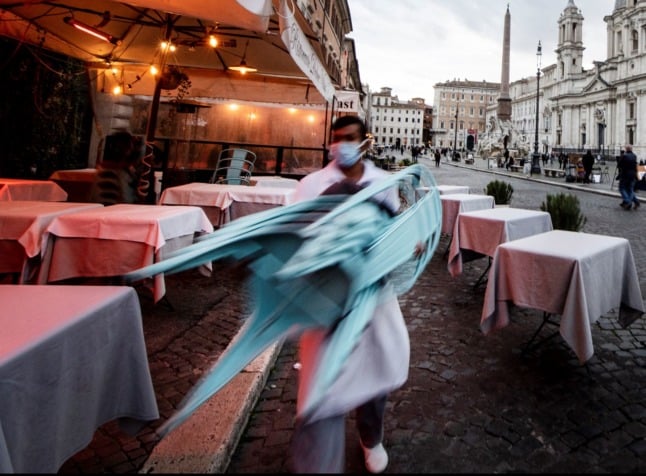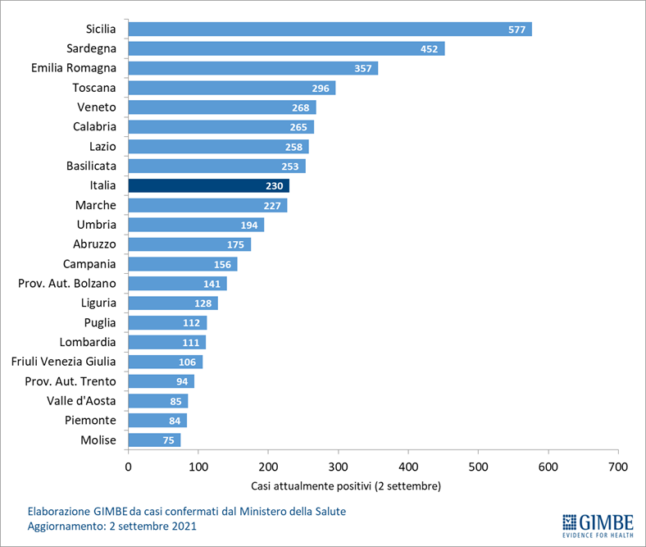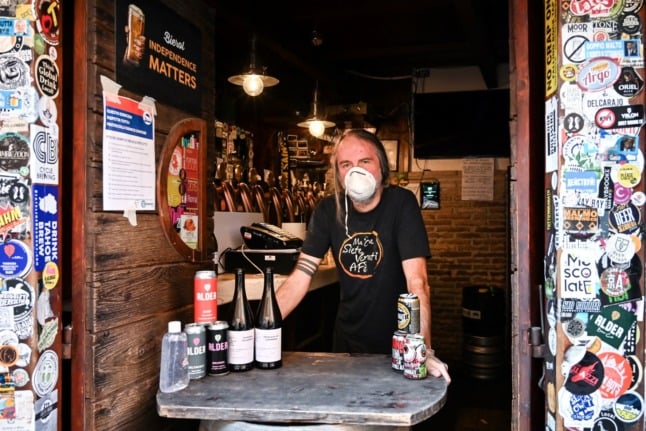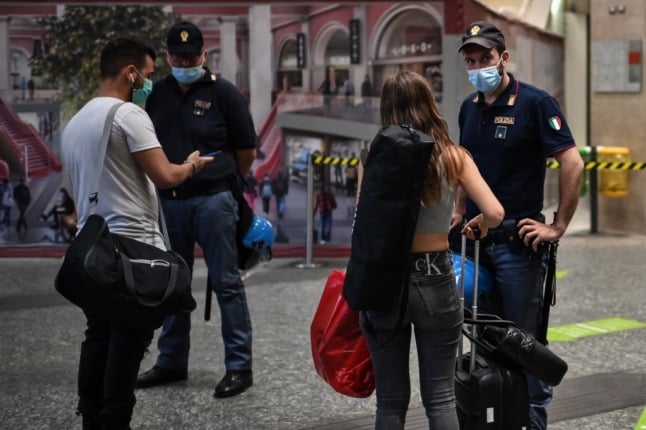Sicily was bumped up to the third of Italy’s four-tier restriction zones on Monday, after its rate of coronavirus infections and hospitalisations soared in recent weeks.
It is currently the only Italian region that does not have the least-restricted ‘white’ zone status, though this is likely to change if infection rates continue to rise in other regions.
READ ALSO: Italy’s Sicily region placed back under ‘yellow zone’ restrictions as Covid hospitalisations rise
On July 22nd, the Italian government announced new criteria for determining whether a region should be returned to yellow zone status. Those are:
- weekly infection rates of 50 new cases per 100 thousand inhabitants
- 10 percent or more Covid patient occupancy of intensive care wards
- 15 percent or more Covid patient occupancy of general hospital wards
A move to the yellow zone is theoretically triggered if all three thresholds are simultaneously exceeded; however, the Ministry of Health previously delayed increasing restrictions on Sicily for more than a week after the region went over the limit on all three parameters, judging its hospital admission and ICU occupancy rates to be ‘steady’, despite being high.

Under this criteria, Sardinia and Calabria are currently the two regions most at risk of following Sicily into the yellow zone, based on the latest regional data published on Friday in the weekly report from the Italian health ministry and Higher Health Institute (ISS).
Sardinia is at the threshold of 15% general hospital ward occupancy rates, and over the maximum ICU threshold at 13%.
Calabria recorded 9% general hospital ward occupancy, just shy of the health ministry’s 10% limit, and 17% in intensive care.
Overall 17 regions and autonomous provinces are deemed to be ‘moderate’ risk, the report states.
Meanwhile the number of cases per 100,000 inhabitants is highest in Sicily, Sardinia, Emilia-Romagna, Tuscany and Veneto.

Data visualisation by the Gimbe health institute based on health ministry figures.
Overall, the regions which appear to run the lowest risk of being moved into higher tier restrictions are Valle d’Aosta, Veneto, the autonomous provinces and Bolzano and Trento, Piedmont, Molise, Lombardy, and Liguria.
All of these regions had lower than 5% Covid patient occupancy across their ICU and general hospital wards as of Thursday.
READ ALSO: What changes about life in Italy in September 2021?
The Italian health ministry reviews the health data weekly and any changes to the zone restrictions are announced on Friday afternoons, coming into force the following Monday.
Once a region is designated a yellow zone, that classification will then be reviewed every two weeks.
Figures for each region are published daily by Italy’s National Agency for Regional Health Services, or Agenas.

Which rules change in the ‘yellow’ zone?
The white zone provides for very few restrictions, although masks are still required on public transport and in shops and other indoor public spaces.
Yellow zone restrictions require that masks are worn in all public spaces, including outdoors, and that restaurants may only seat a maximum of four people per table (unless the group is co-habiting) though indoor dining is allowed, according to the Health Ministry.
However there is no evening curfew, and travel between yellow and white zone regions is not restricted.
Previously, yellow zone rules also restricted certain events and the opening hours of some businesses. This time however all businesses remain open and larger events such as fairs and concerts can go ahead with the ‘green pass’ requirement in place.
READ ALSO:
- How Italy has tightened the ’green pass’ rules in September
- Can tourists and visitors use Italy’s Covid ‘green pass’ to access museums, restaurants and trains?
- Q&A: Your questions answered about Italy’s Covid health pass
“Access to festivals and fairs, including local ones, is allowed only to subjects with a Covid-19 green certification,” the health ministry states in its latest update to the rules.
Nationwide, Italy’s green pass is required to gain access to certain spaces including cinemas, museums and sports venues, or to eat indoors at restaurants.
As of September 1st, the pass is also required to take interregional public transport and domestic flights.
These rules appear to be in place regardless of zone colour, however it is unclear what may change if Italy designates regions higher-risk orange and red zones again in future.
See further information here about how you can access the Italian health pass if you live in Italy here, and find out what visitors need to do here.
For more information about how the rules may apply to you, see the Italian Health Ministry’s website or consult the Italian embassy in your country.



 Please whitelist us to continue reading.
Please whitelist us to continue reading.
What is the earliest point I can complete the eu passenger locator form for entry into Italy?